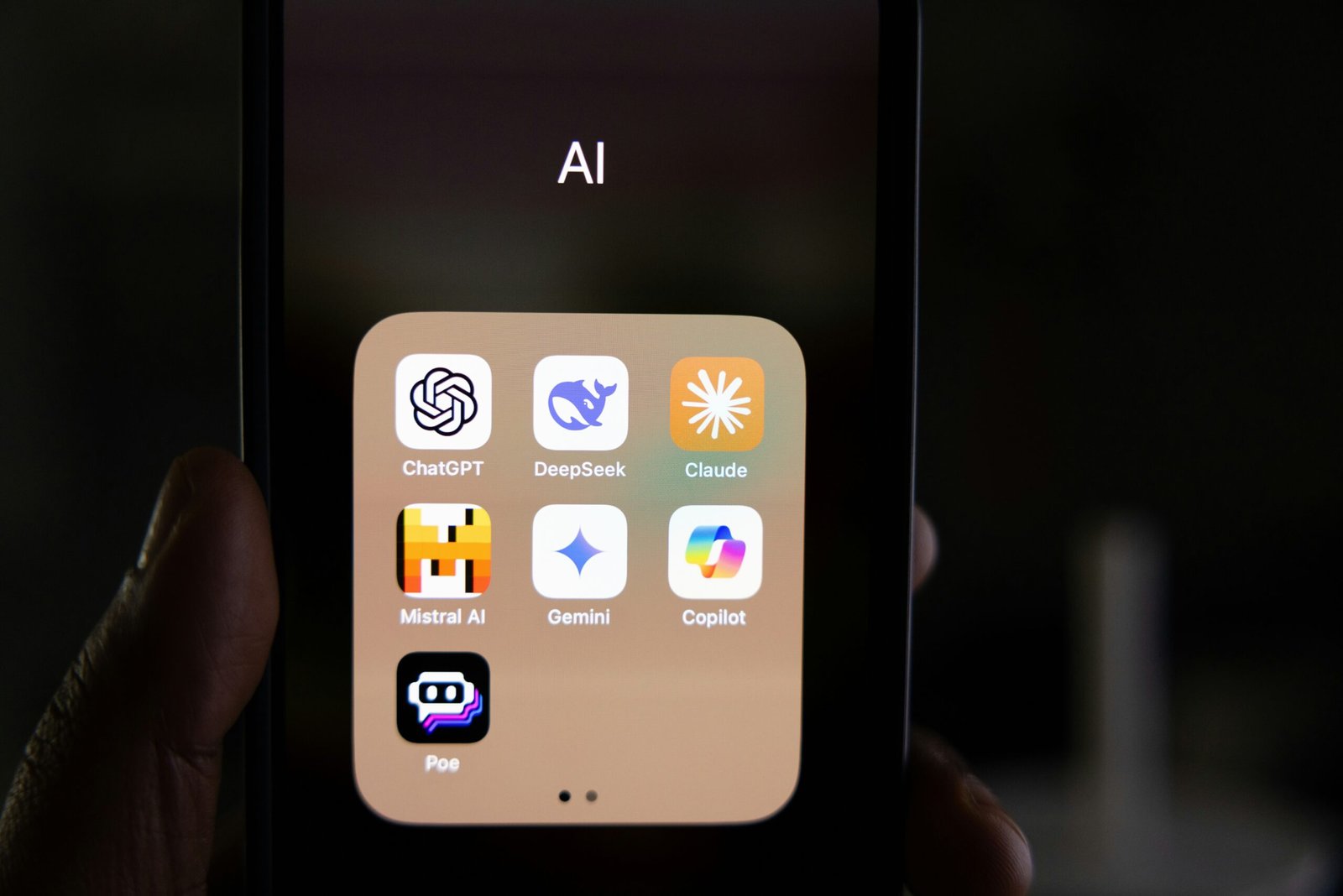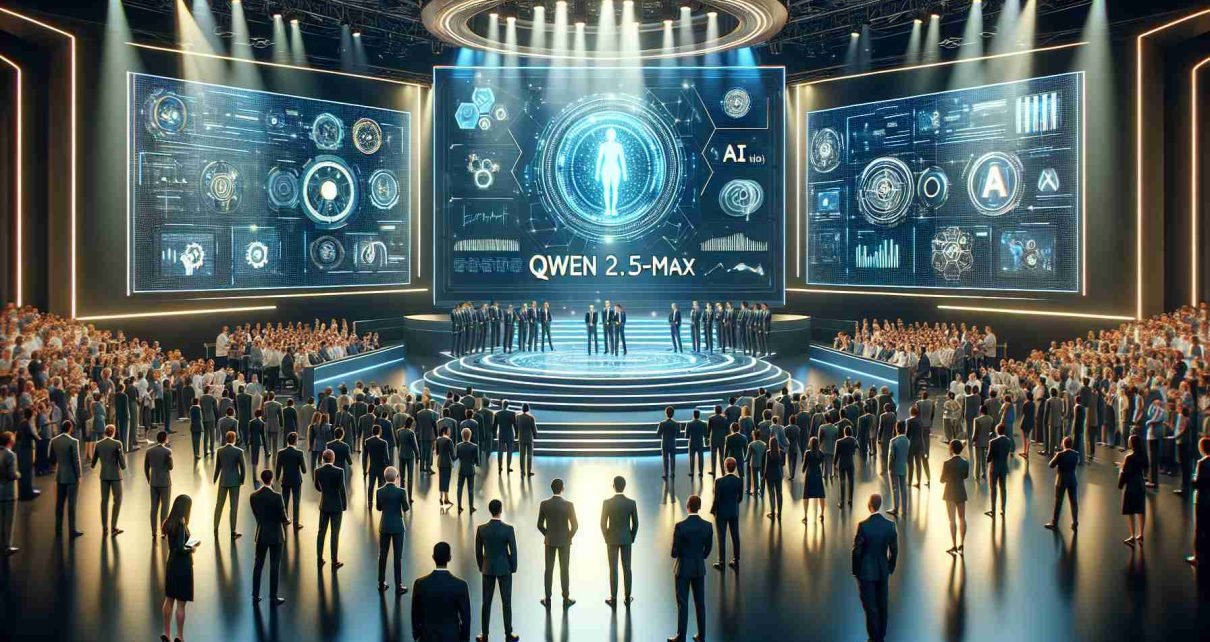Introduction to AI and DeepSeek
Artificial intelligence (AI) represents a broad spectrum of technologies designed to mimic human cognitive functions such as learning, reasoning, and problem-solving. The evolution of AI can be traced back to the mid-20th century, when computer scientists began developing algorithms to conduct tasks that typically required human intelligence. Over the decades, significant advancements in computing power and data analytics have propelled AI from theoretical concepts to practical applications that permeate various sectors, including healthcare, finance, and education.
DeepSeek is an innovative tool that harnesses the potential of AI technologies to enhance information retrieval and decision-making processes. Operating primarily through advanced algorithms, DeepSeek leverages machine learning techniques to analyze vast amounts of data, identify patterns, and generate insights that can inform strategic actions. Its architecture is designed to support both structured and unstructured data, making it a versatile solution for individuals and organizations alike looking to optimize their workflows.
The functionality of DeepSeek is characterized by its ability to understand natural language inputs, enabling users to engage with the system in a manner that feels intuitive. This capability not only increases accessibility but also promotes the efficiency of information retrieval. By integrating AI technologies, DeepSeek can continuously learn from user interactions, refining its responses and enhancing the overall experience with each engagement. This adaptability is crucial in a world where the amount of data generated is exponentially increasing.
As we navigate through this discussion, understanding the foundations of AI and the operational mechanisms of DeepSeek will provide valuable context for the significant role these technologies are set to play in shaping future narratives across various domains.
Current Trends in AI Development
As of 2023, the field of artificial intelligence (AI) is witnessing groundbreaking advancements that are transforming various industries and profoundly affecting everyday life. One of the most significant trends is the enhancement of machine learning algorithms, which are becoming increasingly sophisticated in their ability to analyze vast datasets. This capability allows organizations to gain deeper insights, optimize processes, and make data-driven decisions. Consequently, sectors such as healthcare, finance, and marketing are leveraging machine learning to improve service delivery and customer interaction.
Natural language processing (NLP) has also made substantial strides, enabling machines to understand and generate human language with remarkable accuracy. The emergence of large language models, which utilize deep learning techniques, facilitates applications ranging from virtual customer support agents to content creation tools. As companies adopt NLP technologies, they are able to enhance user experiences and streamline communication processes, which is critical in an era where personalization is a competitive advantage.
Moreover, computer vision technologies are becoming more prevalent, fueling innovations in automation, security, and surveillance. Advanced image recognition and processing capabilities allow for real-time monitoring and analysis, which is particularly beneficial in industries such as retail, where visual data can be harnessed to understand consumer behavior and improve inventory management.
Automation is another key trend in AI development, significantly reshaping traditional work environments. The integration of AI-powered systems into operational workflows facilitates efficiency and reduces human error, leading to cost savings and productivity boosts. This trend is especially pronounced in manufacturing and logistics, where robotics and AI-driven systems optimize supply chains and enhance overall performance.
As these trends continue to evolve, they underscore the remarkable potential of artificial intelligence in shaping the future of industries, driving innovation, and enhancing daily life. The ongoing development of AI technologies indicates a promising horizon that beckons further exploration.
DeepSeek’s Role in Data Analysis
In an era dominated by information, the ability to process and analyze vast quantities of data is paramount. DeepSeek stands out as an innovative platform that leverages advanced artificial intelligence algorithms to enhance data analysis capabilities. By utilizing machine learning and neural networks, DeepSeek not only simplifies the handling of large datasets but also enables organizations to extract actionable insights that drive informed decision-making.
One of the key strengths of DeepSeek lies in its ability to automate data processing tasks, significantly reducing the time required to interpret complex information. The platform employs sophisticated analytical techniques to identify patterns and correlations within data, allowing businesses to unveil trends that may not be immediately apparent. For instance, in the healthcare sector, DeepSeek can analyze patient records to identify common health issues and predict potential outbreaks, thus facilitating preventive measures and improving patient care.
Moreover, DeepSeek’s applicability extends across various industries, including finance, marketing, and manufacturing. In finance, for example, the platform can sift through financial transactions to detect fraudulent activity, ensuring greater security and compliance. Its capabilities also enhance customer insights in marketing by analyzing consumer behavior, which can lead to more targeted advertising efforts. In manufacturing, predictive maintenance powered by DeepSeek’s analysis can foresee equipment failures, minimizing downtime and optimizing operational efficiency.
As organizations increasingly rely on data to shape their strategies, the role of DeepSeek in data analysis becomes ever more critical. By harnessing the power of artificial intelligence, DeepSeek transforms raw data into meaningful knowledge, empowering businesses to make data-driven decisions that position them for future success. In summary, DeepSeek’s contributions to data analysis illustrate its significance as a vital tool in the modern digital landscape, paving the way for more informed and strategic choices across various sectors.
Future Applications of AI and DeepSeek
As we move further into the 21st century, the potential applications of artificial intelligence (AI) and innovative technologies such as DeepSeek appear vast and transformative across various sectors. In healthcare, for instance, AI algorithms could streamline diagnostics, enabling more accurate and timely identification of conditions. DeepSeek, with its advanced predictive capabilities, may assist in personalized medicine, helping to tailor treatment plans based on an individual’s genetic makeup and response patterns.
In the finance sector, AI is set to revolutionize risk assessment and fraud detection. The integration of DeepSeek could further enhance these capabilities by analyzing large datasets rapidly and identifying complex patterns that human analysts might overlook. This could lead to improved decision-making processes, offering businesses a competitive edge while enhancing customer trust and safeguarding assets.
Education is another realm where the collaboration between AI and DeepSeek holds significant promise. By leveraging these technologies, educational institutions could develop personalized learning experiences that adapt to the unique needs and learning styles of students. AI-driven platforms could assess student progress and engagement in real-time, facilitating more effective interventions and resource allocations to foster improved academic outcomes.
Beyond these sectors, the implications of AI and DeepSeek extend to industries such as agriculture, where data-driven insights may optimize crop yields while minimizing environmental impacts. Similarly, in transportation, intelligent systems leveraging deep learning could enhance logistics and route optimization, resulting in environmentally friendly solutions and improved efficiency.
In summary, the prospective applications of AI and DeepSeek are extensive and versatile. Their potential to address complex challenges across various domains signifies a transformative shift that could propel society towards heightened efficiency, personalization, and innovation in the years to come.
Ethical Considerations and Challenges
The rapid advancement of artificial intelligence (AI) and machine learning tools, such as DeepSeek, has raised significant ethical considerations and challenges that require careful examination. Among the foremost concerns is data privacy. As AI systems increasingly rely on vast amounts of data to function effectively, the potential for misuse or unauthorized access to sensitive information grows. Organizations must prioritize the establishment of robust data protection measures, ensuring that analytics and algorithms do not infringe on individual privacy rights. Failure to address these concerns could lead to significant harm to users and a loss of public trust in AI technologies.
Moreover, algorithmic bias poses another critical ethical challenge. AI systems often draw insights from historical data, which means they may inadvertently perpetuate existing biases present in that data. This can lead to skewed outcomes or discrimination against certain demographic groups, exacerbating societal inequalities. It is essential for developers to implement thorough bias mitigation strategies and incorporate diverse perspectives into the design and evaluation processes to achieve fair and equitable results. Only through a conscientious approach can we ensure that AI systems, including DeepSeek, function without reinforcing harmful stereotypes or discriminatory practices.
Finally, accountability remains a significant concern in the realm of AI. As algorithms become more sophisticated and autonomous, determining who is responsible for erroneous or biased outcomes can be complex. It is vital for organizations to establish clear lines of accountability, particularly in decision-making scenarios where AI plays a central role. Transparent governance frameworks and ethical guidelines must be defined to hold developers and companies liable for their AI systems’ impacts. As we further integrate AI tools like DeepSeek into various sectors, the development of ethical AI practices will become imperative, fostering responsible and sustainable implementations that prioritize human rights and societal well-being.
The Future Workforce and AI
The emergence of artificial intelligence (AI) and tools like DeepSeek is poised to significantly reshape the future workforce. As AI systems become more sophisticated and capable of performing tasks traditionally handled by humans, the concern over job displacement is paramount. Industries such as manufacturing, retail, and customer service are already witnessing the implementation of AI technologies that streamline operations, leading to reduced labor needs. For instance, chatbots are increasingly replacing customer service representatives, while robots are taking over assembly line tasks. This trend raises legitimate questions regarding the stability of jobs across various sectors, necessitating a proactive response from both organizations and workforce members.
However, while AI may displace certain roles, it also catalyzes the creation of new job opportunities. The rise of AI technology demands a workforce adept in various specialized fields, including data analysis, machine learning, and AI management. Additionally, industries will require professionals who possess a blend of technical and soft skills to effectively collaborate with AI systems. As companies like DeepSeek incorporate AI into their operations, roles related to AI ethics, programming, and compliance will become increasingly indispensable. The focus will thus shift towards workers capable of adapting to these new paradigms, hinting at a transformation rather than a mere reduction of the workforce.
To navigate this transition successfully, reskilling and upskilling initiatives are essential. Organizations should invest in training programs that equip employees with relevant skills to thrive in an AI-driven environment. Case studies reveal that companies embracing this strategy not only retain their workforce but also enhance productivity and operational effectiveness. For instance, firms that have adopted flexible training modules report a significant uptick in employee satisfaction and retention rates. In this evolving job market, adaptability will be key for both employers and employees, as they work together to harness the potential of AI technologies responsibly and effectively.
Integrating DeepSeek into Business Strategies
The rapid advancement of artificial intelligence (AI) technologies has opened numerous avenues for businesses seeking to enhance their operational efficiencies and market competitiveness. One of the prominent tools among these is DeepSeek, which can be strategically integrated into various business models. By harnessing the capabilities of DeepSeek, companies can gain invaluable insights into data patterns, customer preferences, and market trends, ultimately driving innovation and optimizing processes.
To begin with, businesses must identify clear objectives for integrating DeepSeek into their existing operations. This may involve improving customer engagement, refining product development cycles, or streamlining supply chain management. For instance, leveraging DeepSeek’s data analysis capabilities can enable organizations to predict consumer behavior more accurately, allowing for targeted marketing strategies that resonate with their audience. This targeted approach not only enhances customer satisfaction but also leads to improved sales performance.
Moreover, best practices for implementing DeepSeek should include fostering a culture of adaptability within the organization. Employees must be trained to effectively utilize the insights generated by DeepSeek, translating data into actionable strategies. Regular training sessions and workshops can facilitate this knowledge transfer, empowering staff to make informed decisions based on AI-driven analyses.
Measuring success is another critical component of integrating DeepSeek into business strategies. Organizations should develop key performance indicators (KPIs) that align with their objectives, allowing them to track the impact of DeepSeek on their overall performance. Through continuous monitoring and evaluation, businesses can identify areas for improvement, ensuring that their investment in AI technology yields optimal results.
Incorporating DeepSeek into business strategies not only equips organizations with a competitive edge but also positions them for long-term growth in an ever-evolving market landscape.
Collaboration Between Humans and AI
The partnership between humans and artificial intelligence (AI) has emerged as a transformative force across various sectors, enhancing both efficiency and creativity. Tools like DeepSeek exemplify this collaboration, offering a framework that allows for a synergistic relationship where human intelligence and machine learning capabilities can coexist and complement each other. By utilizing advanced algorithms and data processing techniques, AI systems can process vast amounts of information in a fraction of the time it would take a human, thereby freeing up cognitive resources for more complex tasks.
This collaborative model allows professionals to tap into the analytical prowess of AI while applying their unique human insights and creativity. For instance, in fields such as healthcare, DeepSeek can analyze medical data swiftly to identify patterns, enabling doctors to make informed decisions backed by solid evidence. Consequently, this amalgamation not only improves efficiency but also enhances the quality of care provided to patients.
Moreover, the impact of AI extends into creative industries as well. Designers, artists, and writers are increasingly leveraging tools like DeepSeek to augment their creative processes. By generating ideas, offering suggestions, and analyzing market trends, AI facilitates a more dynamic creative environment. This interplay enhances the exploration of possibilities that are often overlooked when relying solely on human intuition.
Collaboration between humans and AI also plays a vital role in problem-solving. By combining the cognitive abilities of humans, such as empathizing and contextual understanding, with AI’s capacity for data analysis and computation, this partnership can lead to innovative solutions that address complex challenges effectively. As industries continue to evolve, embracing such collaborations will be essential for fostering a culture of continuous improvement and innovation.
Conclusion and Future Outlook
The discussion surrounding artificial intelligence (AI) and platforms like DeepSeek highlights their transformative potential across various sectors, including healthcare, finance, and education. As we navigate an era defined by rapid advancements in technology, it becomes evident that both AI and DeepSeek are poised to address a myriad of pressing societal issues. The capacity of AI systems to analyze vast amounts of data can lead to more effective decision-making processes, indicative of the enhancements in operational efficiency that these technologies offer. Moreover, platforms such as DeepSeek are enabling organizations to unlock insights that were previously inaccessible, thus fostering innovation.
Looking to the future, the integration of AI technologies is expected to foster significant economic growth. Industries are increasingly recognizing the importance of AI in enhancing productivity and driving profitability. With the ongoing advancements in machine learning algorithms, the demand for skilled professionals specializing in AI is on the rise, contributing to job creation and economic development. As these technologies evolve, they will likely bring forth new business models, revolutionizing traditional industries and creating opportunities for growth.
However, it is crucial to approach the development and deployment of AI with a sense of responsibility. Ethical considerations should guide the advancements in AI, ensuring that these technologies are developed in a manner that prioritizes fairness, transparency, and accountability. Policymakers, technologists, and industry leaders must collaborate to establish frameworks that mitigate risks associated with AI and DeepSeek implementation. As we advance, fostering an environment of trust in these technologies will be essential for harnessing their full potential while addressing the concerns of society.
In conclusion, AI and platforms like DeepSeek hold considerable promise for transforming our societies and economies. Their ability to drive growth and solve critical issues is undeniable, yet the path forward must be paved with care and ethical considerations to fully realize their benefits.






